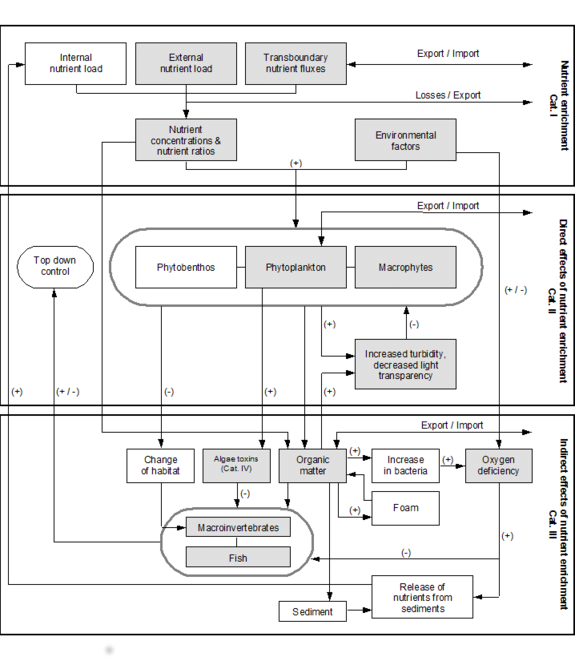OSPAR eutrophication assessment
Coastal eutrophication is a growing marine environmental problem in Europe and the need for more effective monitoring and control measures is increasing. The OSPAR Commission adopted the Common Procedure for the Identification of the Eutrophication Status of the maritime area in 1997. OSPAR committed all members to reduce phosphorus and nitrogen inputs into the maritime areas and 'to combat eutrophication to achieve a healthy environment where eutrophication does not occur'.
The Common Procedure is used to assess the eutrophication status of the OSPAR maritime area in a harmonized way. This is based on classifications in terms of the following types of areas: Non-problem Areas, Potential Problem Areas and Problem Areas.
The Common Procedure includes the main parameters involved in eutrophication processess which are roughly differentiated in four categories (see figure)
- Category I: Nutrient enrichment
- Category II: Direct effects of nutrient enrichment
- Category III: Indirect effects of nutrient enrichment
- Category IV: Other effects of nutrient enrichment
References
- OSPAR (2005), Agreement on the Eutrophication Monitoring Programme(Reference number: 2005-4).EUC 2005 Summary Record – EUC 05/13/1, Annex 6.
- Ulrich Claussen, Wanda Zevenboom, Uwe Brockmann, Dilek Topcu and Peter Bot (2009). Assessment of the eutrophication status of transitional, coastal and marine waters within OSPAR. Hydrobiologia. 629, 49-58.
